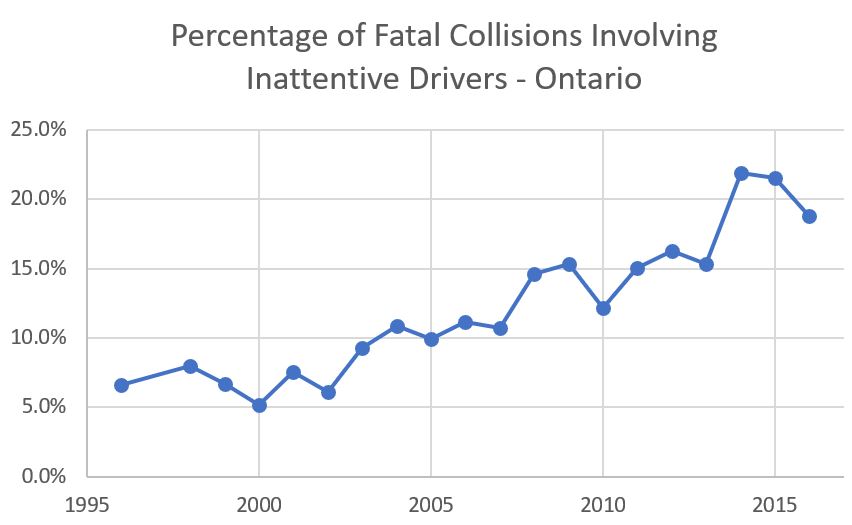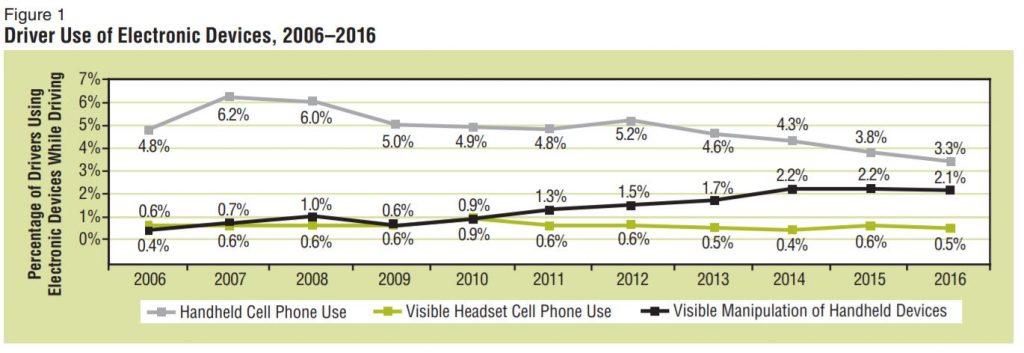With the new year, Ontario’s new penalties for distracted driving come into effect. These penalties are some of the toughest in the country… but what’s the motivation behind them? Where is the need coming from?
Distracted driving has become a serious road safety issue. To provide some context for the new rules, I used some data from several years of the Ontario Road Safety Annual Report to give a visualization of the trend. As you can see below, the percentage of fatal collisions that involve drivers with an “inattentive” driver condition has risen dramatically:

Other jurisdictions have seen a similar trend: as cell phone use increases, collisions – and fatal collisions – involving inattentive drivers increase. Meanwhile, fatalities due to drinking and driving have dropped significantly compared to historical levels. These two trends resulted in a recent milestone: in 2014, for the first time ever in Ontario, collisions involving inattentive drivers took more lives than collisions involving drinking and driving. This happened again in 2015. Preliminary stats for 2016 show drinking and driving fatalities slightly above inattentive fatalities; time will tell whether this is a one-year blip.
It’s logistically difficult to actually measure cell phone use by drivers. I haven’t been able to find any Canadian studies that have attempted it… but in the US, the National Highway Traffic Safety Administration directly surveys cell phone use as part of its annual National Occupant Protection Use Survey. By directly observing drivers at more than 1,000 sites every year, they’ve built up a picture of electronic device use by drivers and in 2017, published a summary of their findings to date. I found it interesting – though not surprising – that they found that handheld cell phone use has steadily decreased over the past decade, but holding and using electronic devices has steadily increased, going from 0.6% of drivers in 2006 to 2.1% of drivers in 2016:

While it’s hard to say for certain, and while we should always be leery about inferring causation from correlation, these trends do seem to fit a general impression that at least some of the increase in “inattentive” collisions and fatalities can be attributed to a rise in texting and app use while driving.
Will the new rules be effective at reducing distracted driving collisions and fatalities? We’ll have to see… but at the very least, I think that these changes, along with other messaging from road authorities, police, and safety advocacy groups, are helping to communicate to the general public that cell phone use while driving is as serious an issue as drinking and driving.
